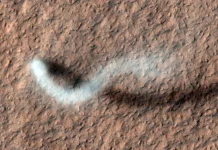
Before humans ever ventured into space, insects were already making the trip — and thriving.
Lightweight, adaptable, and packed with nutrients, insects are now being seriously considered as a sustainable food source for astronauts on long missions to the Moon, Mars, and beyond.
Eating insects might sound unusual to some, but billions of people around the world already do it. The UN’s Food and Agriculture Organization estimates that humans regularly eat over 2,000 species of insects.
The European Space Agency (ESA) has now brought together experts in food, biology, and space science to explore whether insects could join the astronaut menu of the future.
According to Åsa Berggren, a professor at the Swedish University of Agricultural Sciences and lead author of a study in Frontiers in Physiology, insects are remarkably resilient.
“They seem to cope quite well in space environments. They have a good ability to withstand physical stresses,” she says.
“These small animals are also very good at converting materials that humans cannot eat into their own growth — giving us nutritious food.”
Insects could play a double role in space: not only as food but also as part of a recycling system. They can turn waste into protein and other valuable nutrients, helping astronauts create a more self-sufficient ecosystem on long missions.
But before they can become regular items on the space menu, scientists need to understand how space conditions — especially microgravity — affect insect life cycles, reproduction, and physiology.
The first living creatures to reach space and survive were fruit flies, launched on a V-2 rocket in 1947 to study radiation effects. Since then, many insects — including bumblebees, caterpillars, houseflies, and ants — have flown on space missions.
Some did surprisingly well: fruit flies completed their entire life cycle in microgravity, while ants managed to cling to surfaces even without gravity. Others, such as stick insects, struggled with movement and reproduction.
One of the most extraordinary examples of endurance came from tiny invertebrates called tardigrades, or water bears, which survived direct exposure to outer space during an ESA experiment in 2007.
On Earth, insects are already gaining attention as an eco-friendly alternative to meat. Crickets, mealworms, and ants are rich in protein, healthy fats, and essential minerals like iron and zinc. They can be cooked, roasted, or ground into flour for bread, pasta, and snacks. ESA astronaut Samantha Cristoforetti even brought a blueberry cereal bar made with cricket flour on her 2022 mission.
Still, researchers say the space insect story is just beginning. Many earlier experiments were short — often lasting less than 50 days — and didn’t cover an entire insect life cycle.
To fill the gaps, ESA and its partners are now planning new long-term experiments to see which insect species can truly thrive — and maybe feed hungry astronauts — far from Earth.
Source: European Space Agency.



